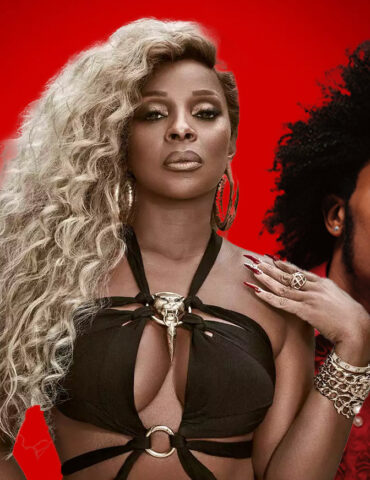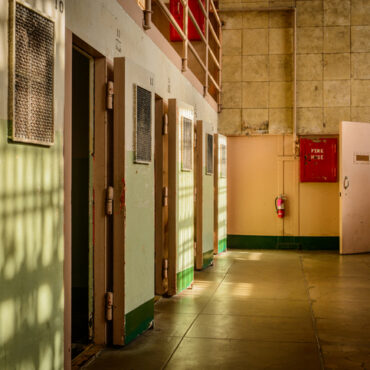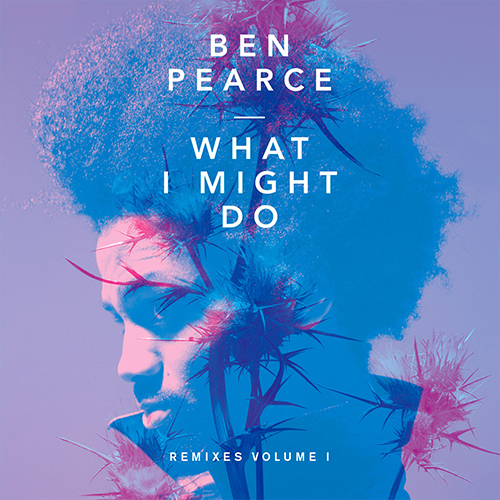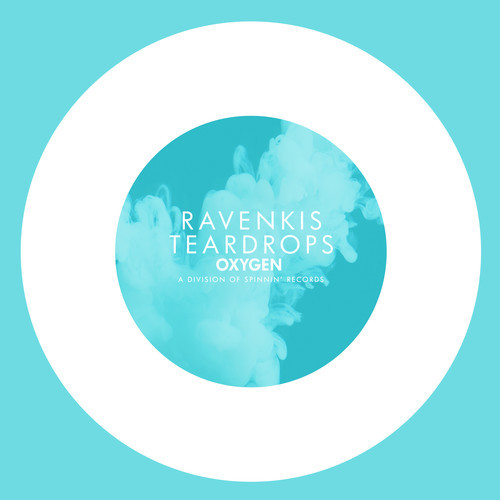-
 play_arrow
play_arrow
Fresh 106 Fresh 106
-
 play_arrow
play_arrow
London Calling Podcast Yana Bolder
Libraries Are An Essential Service For Black And Low-Income Children. So Why Does NYC Mayor Eric Adams Keep Attacking Them?

Source: fstop123 / Getty
I was raised in upstate New York and went to schools that were predominately white. The education I received about my own heritage was mostly absent from those classrooms, but not from my life. I found myself, my ancestors and our stories in the town library, which had a far more diverse collection of books than the one at school. Because of my local public libraries, I learned about Alex Haley’s Roots, the nuances of Dr. Martin Luther King Jr.’s legacy beyond his “I Have a Dream” speech, and so much more.
I moved to New York City after graduating college, and I discovered the majesty of the Brooklyn Public Library’s Central Branch. It was home not only to an incredible amount of books and periodicals but also a variety of cultural programs, employment resources and other free events. It put my humble local library in the outskirts of Syracuse, New York, to shame. I envied the children who grew up with this institution and others like it, at their fingertips.
In a city as vibrant and diverse as New York, libraries have long been pillars of the community, especially for Black children who not only have access to books and other resources, but computers and quiet spaces where they can do their homework.
In January, New York City’s Mayor Adams announced a $111.6 billion proposed budget for the city. “We’re able to invest in the things that matter to New Yorkers in the executive budget, like public safety, early childhood education and the needs of working-class New Yorkers,” he said at the time, according to New York One.
But the mapping of the authenticity of a Mayor’s words can almost always be found in their budgets. In Adams’ case, his truth was located in his choice to increase funding for police while cutting funding for education, including libraries.
The presidents of the Brooklyn Public Library, the New York Public Library and the Queens Public Library said they were “deeply disappointed” in the Adams budget. They noted the loss of seven-day service city-wide. Most branches would likely be open for only five days a week under Adams cuts–part of a long succession of cuts.
For his part, Adams doubled down on his budget and said it was important to prioritize funding the police over libraries by dismissing concerns by simply saying he had “tough decisions” to make and besides, people had to feel safe getting to the library or other venue.
It’s nonsense. The notion of police being mostly honest, deeply dedicated and smart, is a long-standing Hollywood fiction. And in communities of color, they likely increase harm, rather than reduce it.
Source: Sean Rayford / Getty
A 2022 report from the nonpartisan Vera Institute found that:
Police omnipresence is not the most effective way to reduce violent crime nor does it address housing instability or substance use.
Police deployment underground is also not driven by data. In 2020, 10 percent of New York City’s police force was patrolling the subway even though just 2 percent of crime occurred there.
Pouring police into areas with relatively little crime leads to police over-enforcing what they encounter: trivial infractions like fare evasion, vendor licensing, or public sleeping.
Adams ordered officers to prioritize making arrests for these so-called “quality of life” infractions and trumpeted a 51 percent increase in fare evasion arrests.
That kind of “broken windows”-style policing fails to prevent acts of violence that jeopardize public safety.
More, earlier this year, New York’s City’s Council reported that:
New York City’s public libraries saw large spikes in visitors and social program participation in the months before Mayor Adams’ budget cuts prompted them to eliminate Sunday hours at all branches and scale back other services as well, newly released data show.
The data was tucked into the Preliminary Mayor’s Management Report that Adams unveiled. It tracks performance metrics of city services from July 1, 2023, through Oct. 31, the four-month span leading up to the release of Adams’ November budget plan, which enacted the library cuts, among various other city spending reductions.
In that four-month window, the New York Public Library system, which serves Manhattan, the Bronx and Staten Island, welcomed more than 2.6 million visitors to its branches and registered 195,897 new library cards, according to data in the report. That’s a jump from the 2.4 million visitors and 142,933 new library card registrations the system saw in the same four-month window in 2022, the data show.
“The data itself is reason enough for the mayor to restore the libraries to where they used to be,” said Manhattan Councilwoman Carlina Rivera, who heads the Council’s Committee on Cultural Affairs, which has jurisdiction over the city’s three public library systems.
The November cut that resulted in the end of Sunday hours at all branches — as well as a hiring freeze and reduction in some social programs — lowered city funding for the library systems by about $23.6 million this fiscal year.
Beyond visitor upticks, the NYPL, the country’s largest public library system, saw even sharper increases in use of its social programs, which primarily service low-income New Yorkers and include efforts like free literacy courses, after-school initiatives and career help workshops.
Overall, the…report showed the NYPL had 369,555 people enroll in such programs in the latest reporting window — a 22% jump compared with the 287,701 who participated during the same span in 2022.
Use of NYPL branches’ free Wi-Fi also skyrocketed, with the report logging 842,094 individual uses in the most recent four-month reporting stretch, a more than 100% surge over the 395,219 check-ins during the equivalent window in 2022.
The surge in demand for NYPL services was mirrored at the city’s two other public library systems, the report shows.
Queens Public Library’s branches welcomed some 2.1 million visitors and registered 36,081 new library cards in the latest reporting stretch — compared with 1.8 million visitors and 28,966 new cards in the four-month span in 2022, the data show. Social program use also surged to 333,825 individual users in the 2023 four-month period compared with 263,061 in the previous one.
Brooklyn Public Library’s branches saw the biggest spike in new library cards, issuing 105,876 in the latest period compared with 59,967 in the last one, the report shows. Library visits in Brooklyn went up from 1.3 million in the 2022 four-month span to more than 1.8 million in the latest period, while social program participation soared from 158,075 to 235,990, the data show.
Libraries Are Safe Havens
Libraries, generally, but especially in New York City are far more than repositories of books. They serve as safe havens where Black kids and children in lower-income communities can explore, learn, and thrive. And librarians, for all the guidance and support they offer young people, are essential workers—if this city and this nation still believe that education is one of the primary routes to success.
Is it possible that neither the institutions nor the workers are seen as essential because their primary services often undergird the city’s poorest and brownest, the people who have been shown, especially recently, a particularly bold and brutal exclusion from opportunity? Could it be that the mentality of disposability of people, truth and common decency isn’t the sole purview of Trumpites?
We can’t be silent in the face of that. I mean, imagine a place where stories reflect their own experiences, where heroes look like them, and where visiting whole new worlds and words are just a page away. That’s the transformative power of our libraries!
In just one instance, Ralph McDaniels, founder of legendary public TV program Video Music Box, has been at the forefront of several initiatives and programs that combine hip-hop culture and education in the Queens Library system. BRIC Arts Media, an arts and culture center in Brooklyn, provides media workshops and TV equipment rentals at various Brooklyn Library locations over the past few years.
They Say Cut Back, We Say Fight Back
Despite the financial setbacks, the resilience of these institutions is unwavering. They continue to offer essential resources to young people including homework assistance, after-school programs, and cultural events that honor a diversity of histories and heritage. These programs are more than just activities; they are tools for empowerment, helping children build confidence, dream big, and envision limitless futures.
Fortunately, funds were reallocated to education back in April, but libraries are still experiencing cuts. Even still, their essential workers and community supports–and young people–help them remain beacons of inspiration and transformation for Black and other children who know little privilege in America.
Libraries help children invest in their own and the nation’s welfare by offering an open door to worlds and ideas otherwise closed away from them. Our job is to ensure that the people who lead New York City and other municipalities know that we know that true safety will never be found at the business end of a cop’s gun. It will be found in the hearts and minds of people willing to learn, ideate, envision, create and commit to a world where peace, health and safety for all is the normal baseline.
See More:
Black History Month: Books To Read Amid Growing Bans
NYPD In The Subway: Memes Ridicule Cops Keeping Nobody Safe In NYC Train Stations
The post Libraries Are An Essential Service For Black And Low-Income Children. So Why Does NYC Mayor Eric Adams Keep Attacking Them? appeared first on NewsOne.
The post Libraries Are An Essential Service For Black And Low-Income Children. So Why Does NYC Mayor Eric Adams Keep Attacking Them? appeared first on Black America Web.
, In a city as vibrant and diverse as New York, libraries have long been pillars of the community, especially for Black children who not only have access to books and other resources, but computers and quiet spaces where they can do their homework.
The post Libraries Are An Essential Service For Black And Low-Income Children. So Why Does NYC Mayor Eric Adams Keep Attacking Them? appeared first on NewsOne.
The post Libraries Are An Essential Service For Black And Low-Income Children. So Why Does NYC Mayor Eric Adams Keep Attacking Them? appeared first on Black America Web., , Read More, Education, Opinion, Politics, TASS Trending, The Amanda Seales Show, News Archives – Black America Web, [#item_full_content].
Similar posts
Featured post

Latest posts

10 Gift Ideas For The Intellectual Black Man In Your Life

Black Men Incarcerated In Virginia’s Red Onion State Prison Reportedly Set Themselves On Fire Amid Documented Abuse Behind Bars

Home Intruder In Brandon Durham Case Held On $1M Bond…But What About The Cop Who Shot The Victim?

Why Fashion Girlies Like Tracee Ellis Ross Can’t Get Enough Of This Alexander McQueen Lime Green Set

Get The Bag: Issa Rae Opens A Restaurant In South Central, LA Named Somerville
Current show

True R&B
For every Show page the timetable is auomatically generated from the schedule, and you can set automatic carousels of Podcasts, Articles and Charts by simply choosing a category. Curabitur id lacus felis. Sed justo mauris, auctor eget tellus nec, pellentesque varius mauris. Sed eu congue nulla, et tincidunt justo. Aliquam semper faucibus odio id varius. Suspendisse varius laoreet sodales.
closeUpcoming shows
Chart
Copyright 2024 Fresh 106 All Rights Reserved










 Invalid license, for more info click here
Invalid license, for more info click here